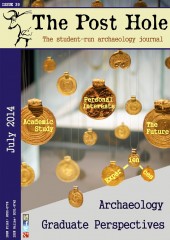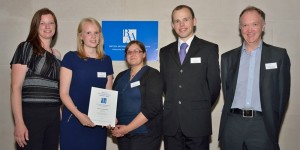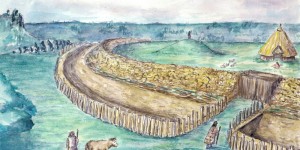As a final year undergraduate student in Archaeology at the University of Reading, I have not long completed my dissertation on the prevalence rates of non-specific infections and specific infectious diseases in the later medieval adult population of St Oswald’s Priory in Gloucester. The prevalence rates gathered from the analysis of the skeletal remains was contextualised, developing an understanding of the socio-economic changes and environmental factors which would have influenced the spread of diseases. Although my main focus was upon human osteology and palaeopathology, whilst researching the identification of joint disease and markers of stress, my interests have spread into the field of micromorphological and geoarchaeological analysis. Micromorphology is by no means a new field of research, but its application to burials and their grave fills is comparatively rare, if not unique, thus providing me with a brand new viewpoint to carry out my research. It has helped to supplement past studies on southern Mesopotamian burial practices and the contemporary environmental conditions and landscape. This was done using the grave cut and fill of an individual buried in a house at the site of Abu Salabikh, Iraq. Isotope analysis has also been another feature of my past research, particularly with the dietary and subsistence changes surrounding the Mesolithic-Neolithic transition in Europe, as controversy has been arising as to just how uniform, wholesome and quick domestic animals and agriculture were adopted.
Away from the more scientific side of archaeology, interests of mine are largely formed around prehistory, with particular emphasis on the Middle Palaeolithic and the history of Neanderthals, as well as the origin of Homo sapiens. I also have a lot of interest in the Neolithic and Early Bronze Age of Britain and North-West Europe, having carried out a research project in college leading to the discovery of a previously unknown long barrow in Gloucestershire, which first fuelled my passion for the period. Moreover, I have had the chance to learn the techniques of artefact illustration which is something I thoroughly enjoyed and was given the opportunity to teach A Level students at Cirencester College on how to do this, and aid them in their independent research projects.
I hope to gain more experience over the next year or so out in the field with excavations and post-excavation processes, as well as volunteering this summer to help Professor Darvill with his current Wiggold project studying Neolithic landscapes in Gloucestershire. My next goal will be to achieve an MSc in Forensic Anthropology and Archaeology in order to expand my knowledge and skills in both an archaeological and modern forensic context, before considering a PhD or a career specialising in either sector.






